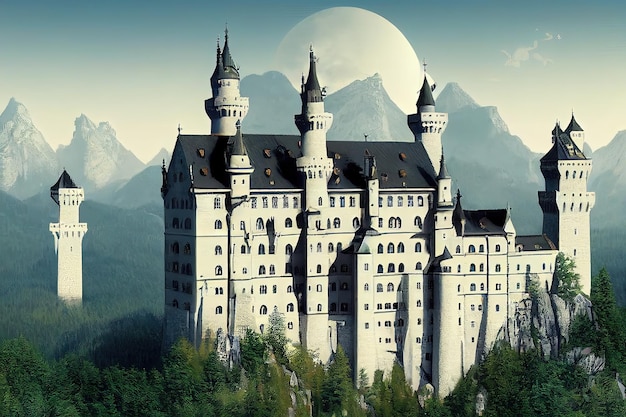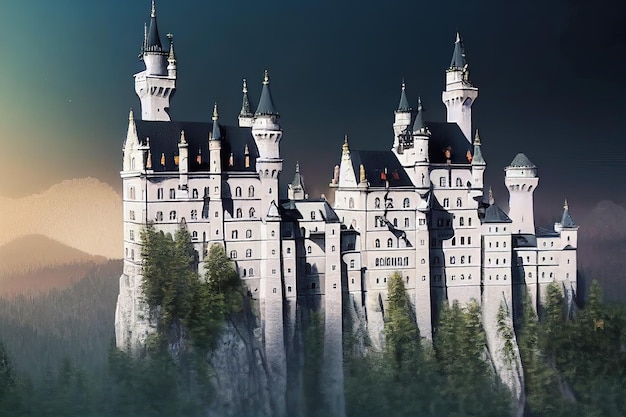Developing Rich Fantasy Worlds: Tips and Tricks
Creating a rich fantasy world is like embarking on a grand adventure of imagination, where dragons soar high and enchanted forests whisper secrets. Whether you’re a seasoned Dungeon Master or a budding novelist, building immersive landscapes can be as exhilarating as the quests that unfold within them. From crafting intricate maps to breathing life into magical creatures, the art of fantasy world building offers endless possibilities. In this guide, we’ll explore creative writing tips and RPG storytelling techniques to help you conjure vibrant realms that captivate hearts and minds. So grab your quill, ready your dice, and let’s set off on this creative quest together! 🏰✨
Crafting Your Fantasy World

Creating your fantasy world is the first step in bringing any epic adventure to life. This process involves designing landscapes, populating them with mythical beings, and crafting the rules that govern the realm. The goal is to create a setting that feels real and immersive to your audience. Whether you’re drawing maps or dreaming up creatures, the key is to blend creativity with coherence. Let’s delve into these foundational elements of fantasy world building.
Building Intricate Maps
Intricate maps are a cornerstone of any well-developed fantasy world. They offer a visual representation of your realm, providing context and depth. Start by sketching a rough outline of the main geographical features, such as mountains, rivers, and forests. Consider using online tools or graph paper for precision.
-
Define key locations: Identify major cities, fortresses, and mysterious sites. Give each place a unique backstory and purpose within your world.
-
Establish borders and terrains: Delineate political territories and natural barriers. Use these to influence the cultures and conflicts in your narrative.
-
Add details and lore: Integrate legends, trade routes, and historical events. This adds layers of richness to your world, making it feel lived-in.
For more guidance on map-making, this Reddit thread offers community advice from fellow creators. Remember, a map is more than just a tool—it’s a gateway to countless adventures. 🗺️
Imagining Enchanted Creatures
Creatures in your fantasy world can be as diverse and imaginative as the realms they inhabit. Think about the role these beings will play. Are they allies, adversaries, or neutral entities? Their design should reflect their environment and purpose.
Imagine a drake that thrives in volcanic regions. Its scales might resemble molten rock, offering camouflage and protection. This environmental adaptation can inform your creature’s abilities and behavior.
Consider the societal role of each creature. Do they have a hierarchy, like dragons being revered as demigods, or are they wild and untamable? Darling Axe provides insights into creature design and how to integrate them seamlessly into your story.
Incorporate real-world biology or mythology as a foundation. This adds authenticity and relatability, allowing your audience to connect with the fantastical elements. Aim to create creatures that enrich your narrative and captivate your readers. 🐉
Weaving Engaging Stories

Once your world is crafted, it’s time to weave stories that captivate and immerse your audience. Engaging narratives are built on strong characters, compelling conflicts, and rich storytelling techniques. Whether through RPG settings or fiction writing, your goal is to keep readers or players on the edge of their seats.
RPG Storytelling Techniques
RPG storytelling relies on the interaction between players and the game master. The key is to create a dynamic narrative that evolves with player choices. Here are some techniques to enhance your RPG sessions:
Create versatile story arcs: Design multiple plotlines that can branch based on player decisions. This flexibility ensures that each session feels unique and engaging.
Develop memorable NPCs: Non-player characters should have distinct personalities and motivations. This adds depth and realism to the game world.
Use immersive descriptions: Paint vivid pictures with your words to help players visualize the setting and action.
For more tips, check out Helping Writers Become Authors. Their insights can help you master the art of interactive storytelling. 🎲
Creative Writing Tips
Creative writing in fantasy involves more than just spinning tales—it’s about crafting experiences. To captivate readers, focus on building tension and exploring themes. Here are some tips to enhance your writing:
-
Develop complex characters: Give your protagonists and antagonists depth by exploring their motivations and fears. This makes them relatable and engaging.
-
Balance pacing and suspense: Alternate between fast-paced action and slower, reflective moments. This keeps readers invested and eager to turn the page.
-
Employ vivid imagery: Use descriptive language to evoke emotions and paint mental pictures. This strengthens the connection between your audience and the story.
Explore Quora’s tips for additional resources that can inspire your creative process. Writing is a journey—embrace it! ✍️
Bringing Worlds to Life

After crafting and storytelling, it’s time to breathe life into your world. This means leveraging inspiration from existing sources and harnessing the magic of imaginative storytelling. By combining these elements, your fantasy world will feel real and enthralling.
Dungeons & Dragons Inspiration
Dungeons & Dragons (D&D) is a treasure trove of storytelling inspiration. Its rich lore, diverse settings, and complex characters can greatly influence your world-building process. Here’s how to draw from D&D:
-
Explore existing modules: These offer ready-made adventures and can spark new ideas.
-
Adapt mechanics: Use D&D’s rules as a framework for magic systems or conflict resolution in your own stories.
-
Engage with the community: Interact with fellow D&D enthusiasts for collaborative creativity and feedback.
Whether you’re a Dungeon Master or a writer, D&D provides a vast resource of creativity. Immerse yourself in its world and let it guide your creation. 🛡️
Imaginative Storytelling Magic
The magic of storytelling lies in its ability to transport audiences to new realities. To achieve this, blend your creativity with tried-and-true techniques. Consider these magical tips:
-
Infuse emotion: Connect with readers by exploring universal themes like love, loss, and courage.
-
Create immersive settings: Use sensory details to make your world feel tangible and vibrant.
-
Craft unexpected twists: Keep audiences guessing with plot surprises that challenge characters and alter the narrative.
For more storytelling magic, explore Jerry Jenkins’s worldbuilding insights. His expertise can help you refine your craft and captivate your audience.✨
By combining these elements, your fantasy worlds will not only captivate but also inspire others to set off on their own creative journeys. So, let’s keep the adventure alive! 🌟

